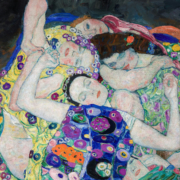From Jung to Bion: an infinite bridge
Abstract
Jung’s thought has underground and profoundly influenced Bion’s work. Ostracized by the mainstream of the more traditional psychoanalytic discourse, the creativity of Jungian research has forcefully re-emerged in Bion’s thought in his revolution of psychoanalytic theory and technique. The Jungian transcendent function, the synergy of conscious and unconscious, has become in Bion’s “binocularity” of the mind: the search for synchronicity between conscious and unconscious processes. Jung’s collective unconscious has merged into the conception of a substantially groupal and intersubjective “protomental”. Jung’s emphasis on waking visions allowed Bion to consider how our mind dreams night and day, both in sleep and wakefulness. Then, alongside the analytic interpretation, the constructive interpretation, the analyst’s capacity for reverie and at-one-ment came to assume an essential therapeutic significance; that is his capacity to dream with the patient to develop the dream potential of the session and the analytic couple, as it is the non-dream that is responsible for the most severe forms of psychopathology. Furthermore, psychoanalysis is not a noun but a verb: it is psychoanalyzing.
These creative matrices, present in the thought of Jung and Bion, have contributed to the transformation of contemporary psychoanalysis into an actual method for the cure of life.




